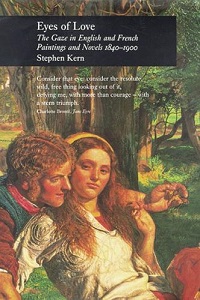
Eyes of Love - The Gaze in English and French Paintings and Novels 1840-1900
In King Cophetua and the Beggar Maid, Edward Burne-Jones shows the monarch in profile, humbly holding his crown in his lap, looking up idolatrously at his beloved maiden. But she does not look down at him: she stares frontally, with wide-open hypnotic eyes. In Thomas Hardy's Tess of the D'Urbervilles, Angel Clare gazes intently at Tess when preparing to propose. She looks away. Stephen Kern identifies this compositional pattern as a 'Proposal Composition': a man in profile looks at a woman, who looks away from him and in the direction of the viewer. It recurs frequently in English and French paintings and novels of the second half of the nineteenth century - in works by Rossetti, Dickens, Manet and numerous others. Eyes of Love shows how the frequency of this proposal composition calls for a reconsideration of widely held arguments about 'the gaze'. Kern shows that, compared with the eyes of men, the eyes of women are more visible, look out into a wider world, consider a more varied range of thoughts, and convey more profound, if not more intense, emotions.Kern's bold reinterpretation of women in art and literature challenges a mass of scholarship that has been so intent upon viewing women as objectified victims of the male gaze that it has neglected to consider the potent subjectivity evident in women's eyes. Compared with the eyes of men, the eyes of women are more visible, look out into a wider world, consider a more varied range of thoughts, and convey more profound, if not more intense, emotions...
